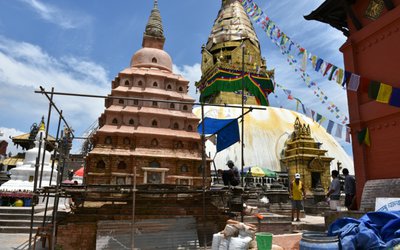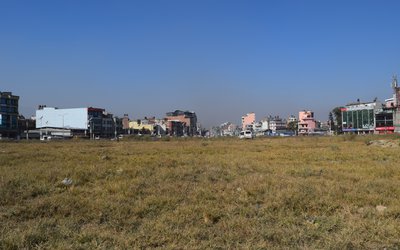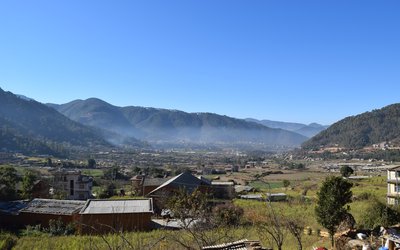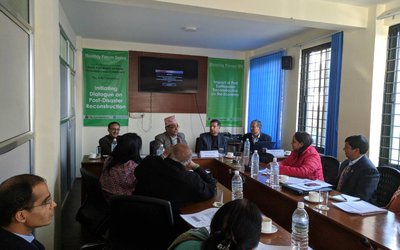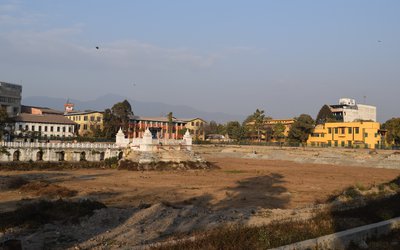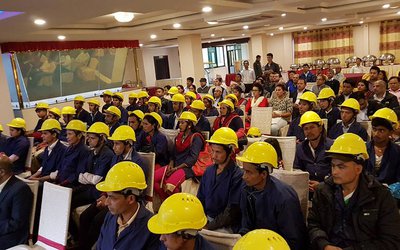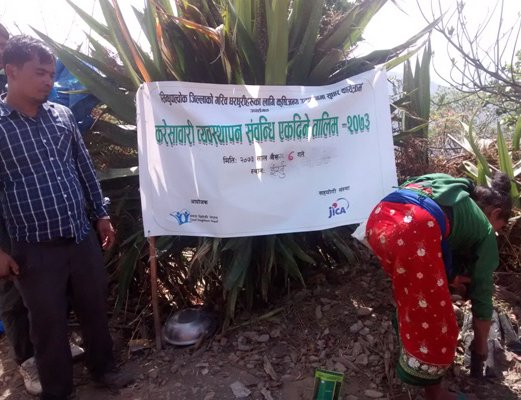
The annual exodus of able-bodied Nepali workers for work abroad has been blamed for the shortage of labor impeding post-earthquake reconstruction activities. But there is more to the labor shortage than meets the eye.
The massive destruction caused by the April 25, 2015 earthquake and the subsequent aftershocks that shook central Nepal necessitated reconstruction on an unprecedented scale. With almost 9,000 people dead and damages to more than 700,000 structures, reconstruction –including of private houses – was estimated to cost Rs 669 billion, which was Rs 51 billion more than the government budget allocated for the fiscal year when the disaster struck. The scale of destruction and the required recovery and reconstruction activities called for mobilizing a large number of laborers.
The Post Disaster Needs Assessment (PDNA) report had identified meeting the demand for skilled construction workers as a main challenge to smooth reconstruction. The same report estimated that the housing sector may need 17,500 masons, and the increased demand was supposed to create new employment opportunities while pushing wages up. Furthermore, the Post Disaster Recovery Framework (PDRF), prepared in 2016, also pointed out that housing reconstruction is likely to generate 322 million workdays of employment over the next five years. The report estimated peak demand to be around 0.54 million workers, which is a significant number compared to one million workers already involved in the construction sector. A large portion of the required labor was expected to be met by household members and new entrants. It is apparent from the reports and statements of government bodies and beneficiaries that the expectation did not translate into reality.
Given the massive outflow of labor from Nepal to Gulf Cooperation Council (GCC) countries and Malaysia, policymakers and commentators have blamed emigration for the labor crunch. Yet, official statistics on labor out-migration indicate this may not be the whole story. The number of Nepal is seeking jobs abroad has plummeted in the years since the earthquake. In 2014-15, on an average 1,400 individuals left the country per day. By 2016-17 the number has dropped to 1,100. It is possible that the reduced outflow of workers is not sufficient to meet the entire increase in demand for construction workers. It is also plausible that many of those who stayed back do not possess the skills required in the construction sector that are in short supply—for example, those related to masonry. This explanation would be consistent with the fact that most Nepali workers heading for the GCC countries and Malaysia are unskilled or semiskilled. There is a view that the immediate imperative of rebuilding one’s own house, together with reconstruction-driven increased employment opportunities within the country, caused the slowdown in migration. However, one must note that the earthquake destroyed not just houses but also livelihoods, possibly making foreign employment and remittance income even more attractive, that the crippling blockade that started less than five months after the earthquake must have also stymied reconstruction activities, and that the slowdown of the economies of the oil-dependent destination countries in the past couple of years directly hit demand for Nepali workers. The point is: multiple factors are at work.
Domestically, labor shortage for reconstruction works does not mean that Nepal lacks spare workforce. According to the Annual Household Survey 2015-16 conducted by Central Bureau of Statistics, 82.7 per cent of the total population in Nepal is economically active and 80 per cent is employed in income-generating activities. The 80 per cent employment rate masks the disguised and underemployment, largely due to the seasonal nature of agriculture related jobs. Further, the 17.3 per cent that are not in the labor force include young individuals that are neither enrolled in educational institutions nor are working. They comprise 11.4 per cent of the youth (aged 15-24). There are thus 1.1 million youths that are not engaged in any income-generating activity. A policy measure is urgently needed to involve these youths in the workforce.
Shortage of materials and labor in the aftermath of a disaster is not unnatural, whether reconstruction efforts are fully financed by governments or the private sector. At the same time, the subsequent reconstruction boom is found to have a favorable impact on the domestic economy, including those directly affected by the disaster. The increased construction activities create employment opportunities while higher demand for laborers drives up wages – not only in the construction sector but also in other sectors. Nepal is no exception to this feature. Wages of skilled construction laborer increased from Rs 800 to Rs 1200, along with a similar rise in the wages of unskilled workers. Reconstruction has even shifted the pattern of migration. Many contractors started sourcing workers from far- and mid-western hills, who otherwise would be part of the seasonal migrants to India. Similarly, earlier women laborers hardly ventured into skilled works such as masonry or carpentry, but the labor crunch has prompted women to take up these jobs, which fetch higher earnings.
It is unfair to expect the government to fully finance the rebuilding and arrange for the laborers for that purpose. The government has clarified through its implementing agency – National Reconstruction Authority (NRA) – that it is providing a grant of Rs 300,000 for building earthquake-proof houses, and also technical support towards that end. Construction as per the set technical requirements requires skilled masons. Also, in order to provide livelihood support to the affected people, the government policy is to use labor-intensive and local technologies. According to NRA data, about 42,000 masons have been provided with long-term and short-term trainings. Moreover, many international organizations working in Nepal are also active in imparting skill training to aid the reconstruction. Despite these efforts, labor availability is still a major issue.
It is paradoxical that Nepal is facing shortage of laborers, yet youths remain out of the workforce and outmigration persists. Post-disaster reconstruction and recovery could potentially have been a turning point for Nepal to start weaning itself off remittances. Reconstruction could have prompted self-sustained job creation domestically; imparting skills to workers and helping them find gainful employment long after the reconstruction is over. However, failure even to retain the workers within the country that are trained particularly for reconstruction has hampered the pace of reconstruction and does not augur well for Nepal’s economic future. This calls for reviewing Nepal’s post-disaster labor management policy, as the earthquake is not the first major disaster to strike Nepal and it is unlikely that it will be the last one.

Dikshya Singh
Singh is a Research Officer of South Asia Watch on Trade, Economics and Environment (SAWTEE). She can be reached at dikshya.singh@sawtee.org
- Reclaiming Open Spaces In Urban Areas
- Nov 11, 2017
